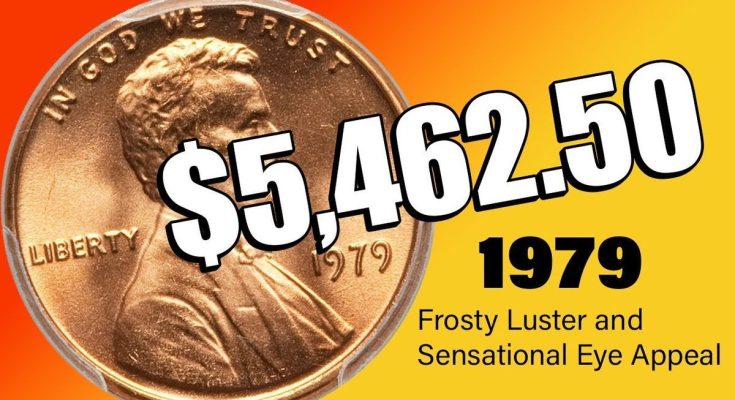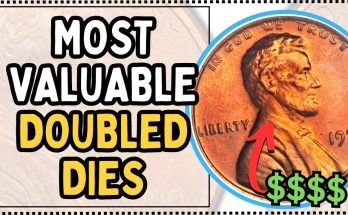The striking image, highlighting a 1979 Lincoln Cent with a monumental price tag of $5,462.50 and the descriptors “Frosty Luster and Sensational Eye Appeal,” showcases the extreme value that can be achieved by an otherwise common modern coin. While most of the over six billion 1979 pennies minted are only worth face value, this image illustrates the rare instances where a coin’s condition and preservation transform it into a highly sought-after collector’s item.
The Importance of Grade and Luster
The difference between a 1-cent coin and one valued at thousands is not a major minting error, but rather its impeccable state of preservation, as highlighted by the phrases “Frosty Luster” and “Sensational Eye Appeal.”
- Mint State (MS) Grade: For a common date like 1979, the value is almost entirely dependent on the coin’s technical grade, as determined by professional grading services. A typical 1979 cent in circulated condition is only worth its face value. However, coins graded Mint State (MS) 67 or higher—meaning they have virtually no flaws, even under magnification—are exceptionally rare and command high prices.
- For instance, an exceptional 1979 Lincoln cent graded Mint State 68 Red (MS-68 Red) sold for $2,820 at auction in 2016, demonstrating the extreme premium for top-tier condition. The price in the photo, $5,462.50, suggests an even higher or unique grade, such as MS-69 Red, or a highly active auction environment.
- “Frosty Luster and Sensational Eye Appeal”: These terms are used by numismatists to describe a coin’s aesthetics. “Luster” refers to the brilliant, undisturbed, frosty sheen on the coin’s surface, which is the result of the striking process and pristine storage. “Red (RD) Color” is the most desirable, indicating that the coin has retained its original, bright copper color with virtually no toning, making it the most valuable color designation. The combination of a high grade and perfect “Eye Appeal” is what drives the price into the thousands.
Beyond Condition: What Else Makes a 1979 Penny Valuable?
While high-grade examples are the primary reason for a 1979 penny to sell for thousands, other factors can also create rare, valuable pieces:
- Mint Errors and Varieties: Mistakes that occur during the minting process can transform a regular coin into a collectible treasure. Though there are no famous errors as dramatic as the 1955 Doubled Die, collectors actively search for numerous smaller, valuable errors on 1979 pennies, including:
- Doubled Dies: A slight, visible doubling of the letters or date.
- Off-Center Strikes: When the coin blank is struck away from the center.
- Clipped Planchets: When a piece of the coin blank is missing before the strike.
- Proof Coins: Proof cents minted in San Francisco (marked with an ‘S’) for collectors can also be valuable, particularly those graded PR 70 (perfect proof). Proof coins can have two main varieties in the ‘S’ mintmark: Clear-S and Filled-S, with the Clear-S typically being more valuable in top grades.
- Original Composition: The 1979 penny was made of 95% copper and 5% zinc, which is the traditional composition before the US Mint switched to the cheaper copper-plated zinc core in mid-1982. This high copper content is one reason these coins were subject to hoarding as copper prices rose, adding to the desirability of perfectly preserved specimens.
In conclusion, the $5,462.50 featured on the image is not a typical price, but a representation of a phenomenal auction result for a “condition rarity.” It serves as a powerful reminder for collectors to inspect their change, as a tiny coin from a common year, if preserved in an astonishing state of “Frosty Luster and Sensational Eye Appeal,” can indeed be worth thousands.



